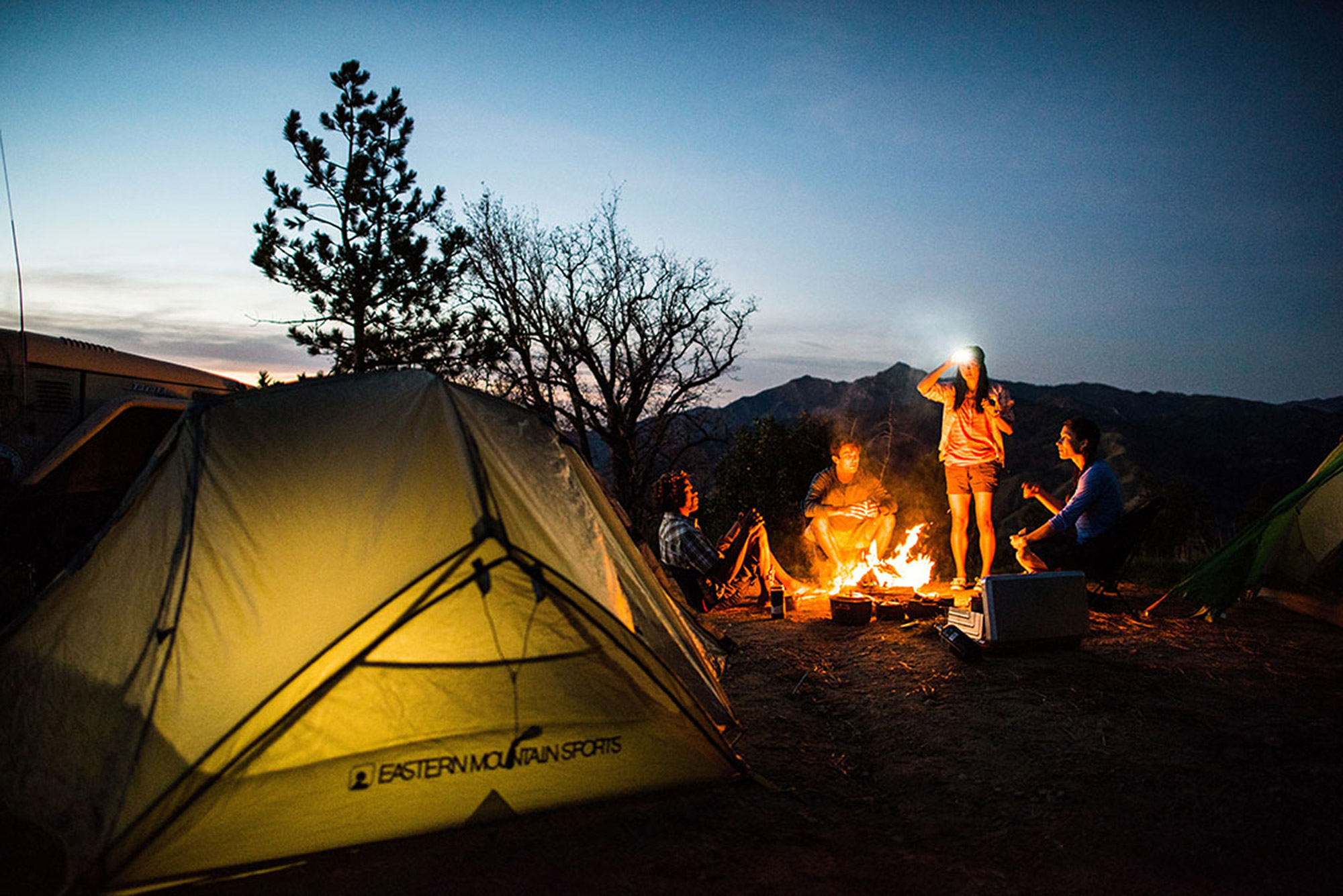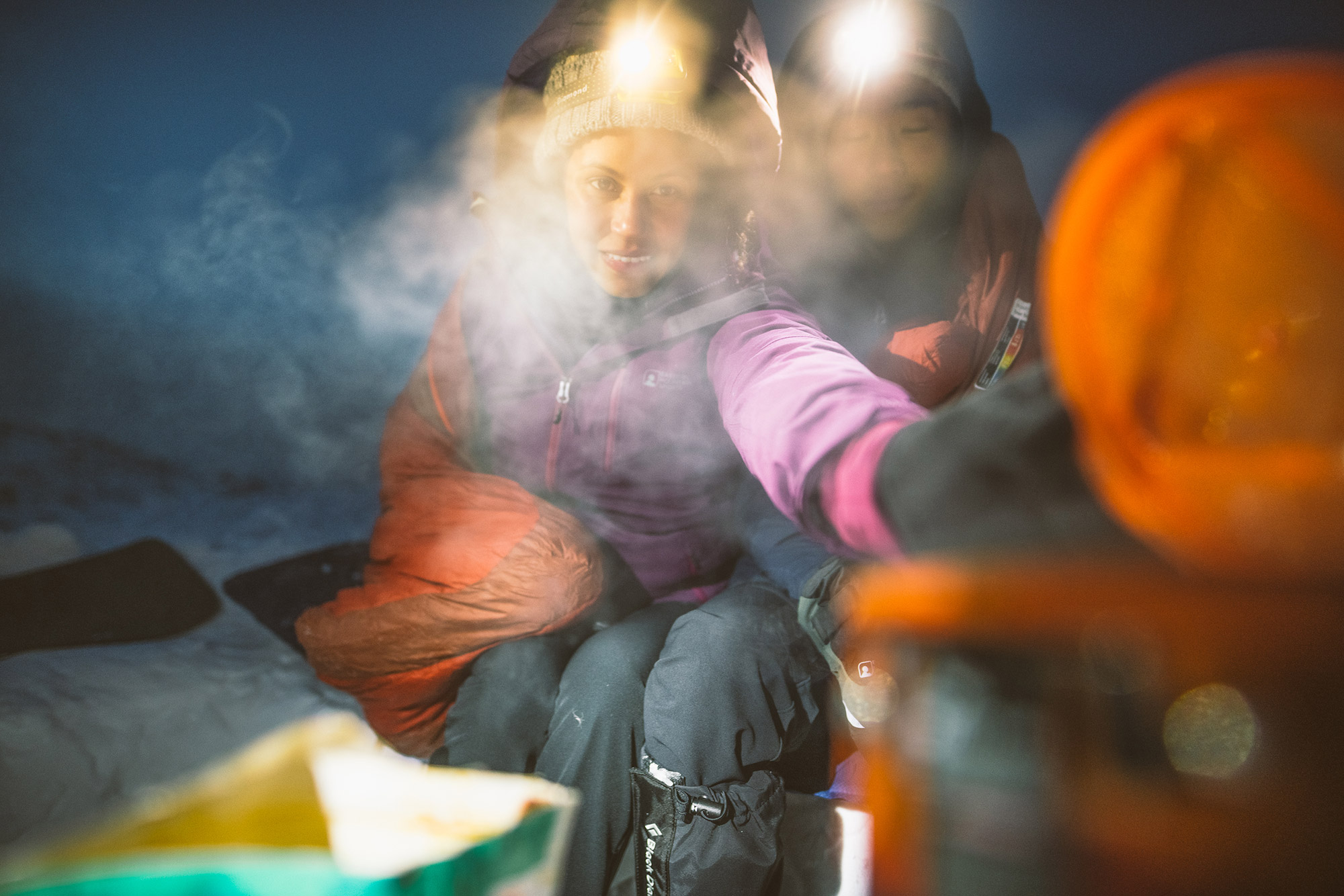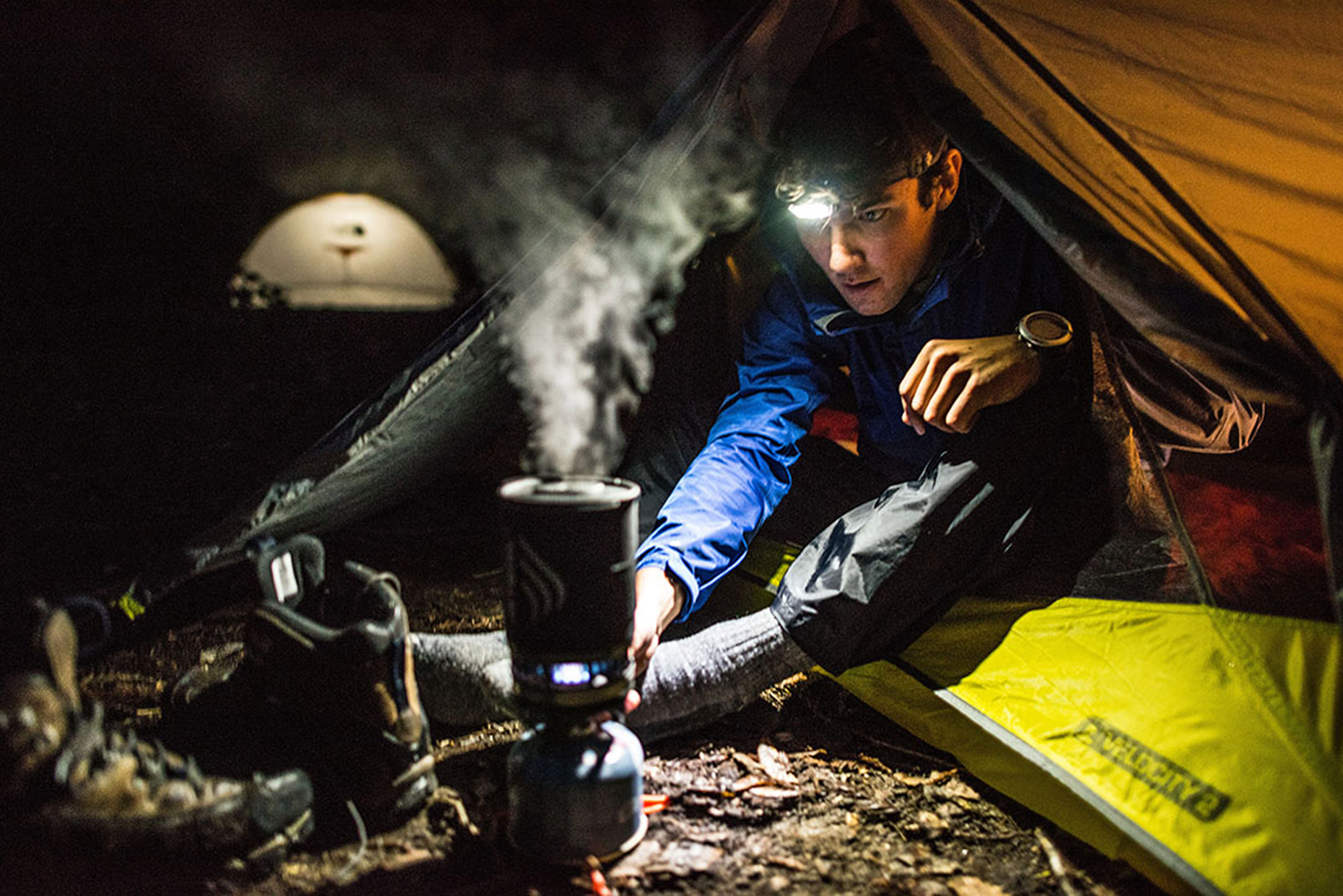Whether you’re running down the trail, setting up your tent, or peeking under the car hood, headlamps are a convenient and hands-free way to provide light in the dark. A headlamp should be in everyone’s arsenal for venturing outdoors but with so many choices, what’s the difference between them all? There are many variables to consider when choosing a headlamp and brightness isn’t the only important thing to look at. So how do you know you’re choosing the right one?

Lumens, Explained
Lumens—which are typically advertised front and center on a headlamp’s packaging and are a good place to start if you’re buying a new light—are the units that measure the total quantity of light emitted in all directions at full battery. Generally speaking, the higher the lumens, the brighter the headlamp, though not all brands measure lumens in exactly the same way, or focus that light the same, which can impact lumen count.
For reference, a car headlight is 1,300 lumens. There are headlamps out there that can reach ~1,000 lumens, but you won’t be able to see what’s right in front of you. The sweet spot for most tasks, like finding gear in your pack, setting up a tent, or walking the dog around the neighborhood is around 150-250 lumens. For extended periods of night-hiking or biking, most folks will prefer 200-350 lumens.
At full brightness, a headlamp is using more battery power, but most headlamps are dimmable, allowing you to fine-tune the right amount of light and battery usage for your task, up to that given maximum lumen number.
Also keep in mind that, as batteries drop from their 100 percent charge, their max brightness will also decrease. Pick a headlamp that is 50-100 lumens more than what you want, since it will likely be operating at standard output most of the time.
GO: 0-49 lumens | 50-99 lumens | 100-199 lumens | 199+ lumens

Headlamp Battery
The next big aspect of headlamps, which ties directly into its brightness, it how it uses its batteries.
Run Time
When buying a headlamp, most will give you an estimated burn time based on power and battery life—This is the amount of time (in hours) until the lights can no longer produce usable brightness at close proximity. This is a crucial factor to consider. If you’re going backpacking in the summer time, you may only need it to last short spurts while getting ready for bed. If you’re ski touring, will it stay lit during a long pre-dawn approach? Most headlamps will give you burn times for both maximum power, and a lower setting—pay attention to both.
Battery Compatibility
Most headlamps work with two or three AAA lithium or alkaline batteries. Rechargeable nickel metal hydride (NiMH) batteries also work well with headlamps and perform better in colder conditions, however they can lose power while sitting idle.
Some headlamps are rechargeable as well, which allows you to plug it in after a trip to ensure you’re always starting our with a 100 percent charge. You might also be able to charge them with a solar panel or power bank on longer trips, though they may not take regular batteries if needed,
Pro Tip: On cold winter trips, don’t forget to sleep with your headlamp inside your sleeping bag to preserve the battery life. On a really cold night, the chill can sap the battery by the time you wake up.

Lighting Features
A good headlamp doesn’t simply turn on and off—It allows you to customize the brightness, beam type, and even color of the light to best suit your needs in the moment.
Lighting Modes
Rather than just offering an on/off switch, most headlamps have multiple brightness modes for performing different tasks and preserving battery power. Check headlamp specs for varying output modes like low, standard and max, or the ability to progressively dim. Each mode will vary in brightness, distance and burn time.
Strobe mode acts as an emergency blinker that’s also helpful in situations where you want to be seen, like riding a bike at night or on a busy road, or navigating foggy waters. Burst mode is offered in certain headlamps which allows for temporary high-lumen beam.
Beam Pattern and Distance
For general camp use, reading or anything up-close, a flood beam is more useful. It gives off light in a wider pattern, rather than throwing it a long-distance, which is ideal for doing things up close like cooking, reading, or getting things ready around camp.
A spot beam gives a tighter view at a longer distance, enabling the user to see further ahead in the dark, which can be nice for hiking down a trail or spotting something on the other side of a lake. Most headlamps will give you the ability to switch back and forth between these two modes.
Color Modes
Many headlamps offer a red-light mode that is great for preserving night vision and battery life and prevents blinding other people in camp.
More sophisticated headlamps may have multiple color modes, including blue and green LEDs. Blue lights are especially important for reading maps at night, since they are the only color that doesn’t wash out red lines on a map, as well as when traveling on the water as blue is the only light that can cut through fog.

Headlamp Style and Features
Basic headlamps have a fairly slim design which makes them extremely lightweight and versatile. For backpacking, hiking, climbing, etc., the standard design with a single strap around the head and the entirety of the light up front is lightest and easiest to use. But for those running with headlamps, either a much smaller, extremely lightweight headlamp, or a headlamp that separates the battery pack and puts it on the back of the head might bounce around less while in motion. This style typically includes a strap over the top of the head, too, to keep it from sliding down.
Other things to keep in mind are the width of the straps, the tilt of the headlamp, waterproofing, and the positioning and ease-of-use of switches and buttons.
Effie Drew
Effie is a long-distance adventurer and pursuer of quiet places and new experiences. She was born and raised in Portland, ME and spent much of her youth in the White Mountains and Maine North Woods. Having traveled over 7,000 miles by foot (& canoe), including the Appalachian Trail, Continental Divide Trail and Northern Forest Canoe Trail, she is happiest while living out of a backpack in the outdoors with her Aussie Shepherd dog, Luna.




